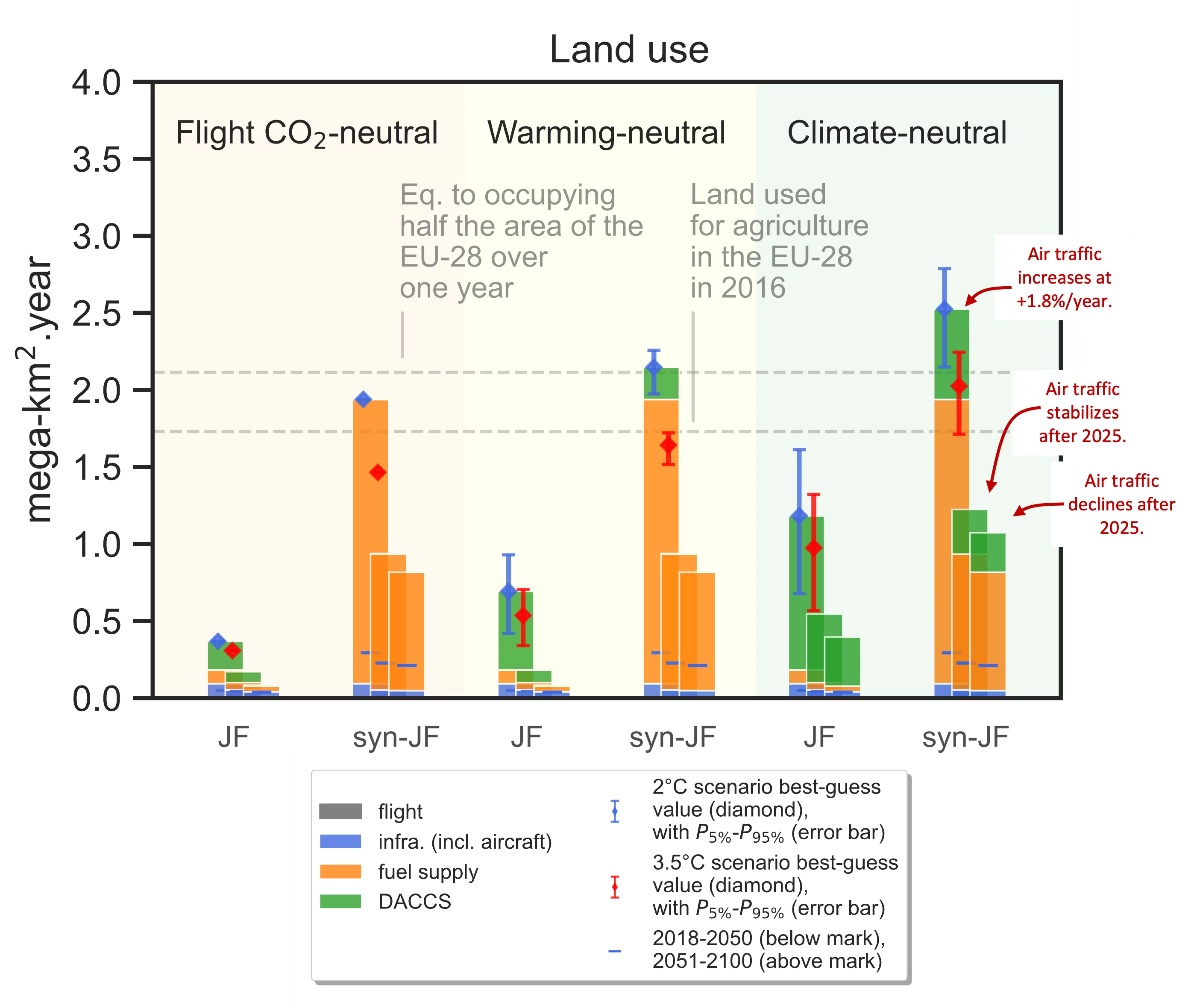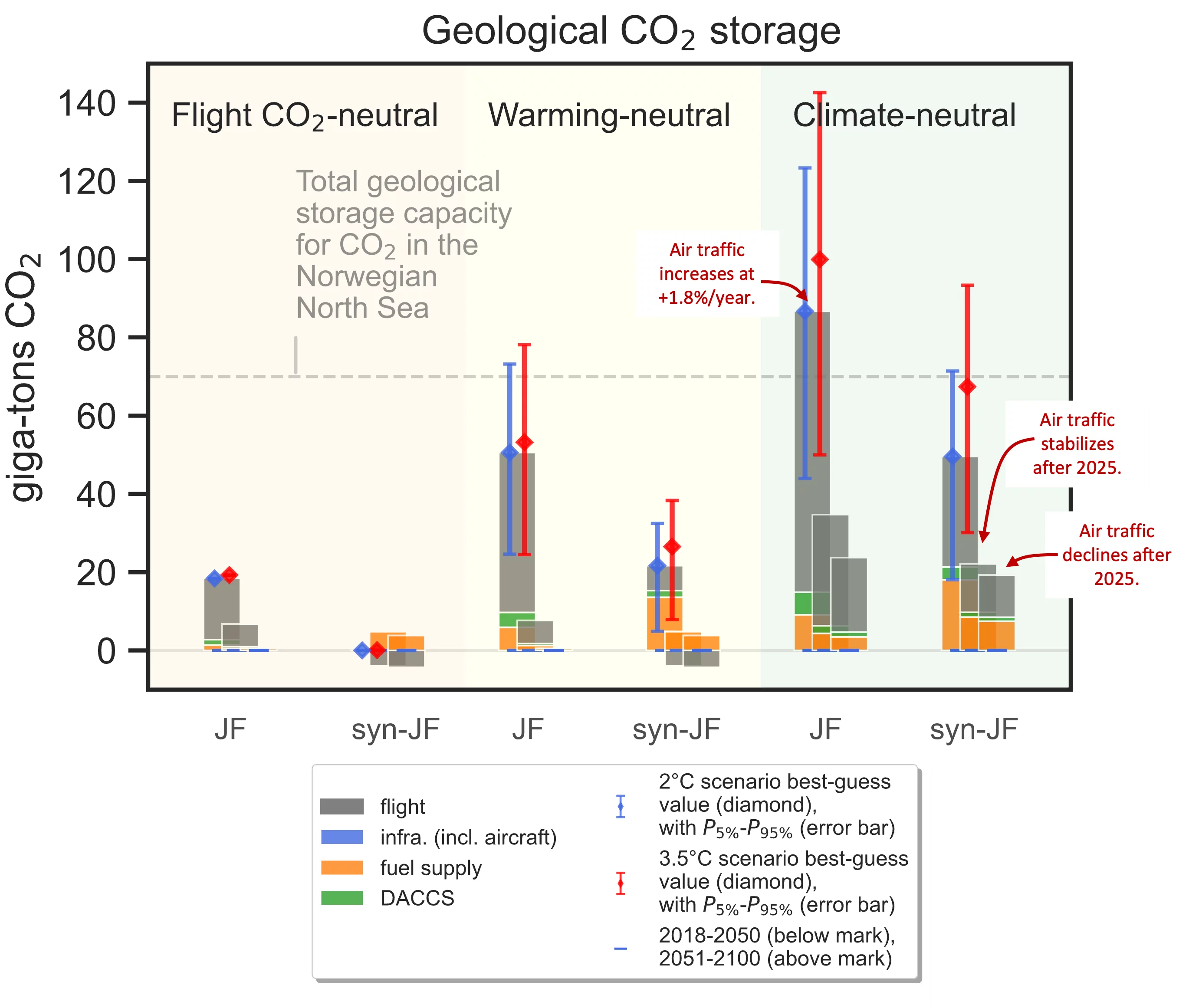Green Skies on the Horizon: A Numerical Dive into Europe's Climate-Neutral Aviation Ambitions
The fight against climate change is a collective effort, and the aviation sector is playing a pivotal role. A recent research piece from Nature Communications, led by Romain Sacchi and his team, delves into the intricate challenge of achieving climate-neutral aviation in Europe.
The Iceberg of Emissions: CO2 and Beyond
It's commonly known that airplanes emit CO2. However, this study uncovers a startling fact: focusing solely on flight CO2 emissions could miss up to 80% of aviation's future climate impact. The deeper, often overlooked contributors are the non-CO2 effects.
Synthetic Jet Fuels: A Renewable Powerhouse
Electricity-based synthetic jet fuels are emerging as a frontrunner solution. Derived from renewable energy sources, they promise a greener flight path. By the year 2100, the study suggests that such fuels could curtail the climate impacts of Europe's aviation fleets by around 40% compared to projections if we stay the current course (i.e., using fossil kerosene instead). Indeed, synthetic fuel could limit the surface temperature increase caused by Europe’s aviation fleet to +0.02 C, instead of +0.035 C.
Yet, the sheer scale of production is mind-boggling. The demand for synthetic jet fuel is projected to rise from 108 billion liters in 2063 to 202 billion liters by 2100.
Resource Consumption: Crunching the Numbers
If Europe’s aircraft fleet is to become truly climate neutral (where all warming over the 2018-2100 period is mitigated) while relying on synthetic fuels some resource constraints may appear. Indeed, the production of these synthetic jet fuels doesn't come without its demands.
Electricity: The lion's share of electricity consumption stems from generating renewable energy. With the rise in synthetic fuel production, the electricity demand—primarily from renewable sources like solar, wind, and hydropower—will spike. If we keep flying increasingly, synthetic fuel will require almost 80 times what the EU-28 produces annually over the 2050-2100 period (see Fig.1 “Climate-neutral”/“syn-JF”/first bar).
Land and Water: Vast tracts of land and significant freshwater reserves are earmarked for renewable energy installations. Solar farms, wind turbines, and hydropower plants will require space and water, even with future efficiency improvements factored in. The production of synthetic fuel over the 2050-2100 period would require about 40% more land than agriculture currently occupies (see Fig.2 “Climate-neutral”/“syn-JF”/first bar).
CO2 Storage: As we scale up Direct Air Carbon Capture and Storage (DACCS), a technology that absorbs CO2 from the atmosphere and stores it underground to counterbalance the remaining aviation emissions not mitigated by synthetic fuel, the requirement for underground CO2 storage facilities will also expand substantially (up to two-thirds of the proven storage capacity in the Norwegian North Sea, see Fig.3 “Climate-neutral”/“syn-JF”/first bar).
The DACCS Solution: A Double-Edged Sword
The other alternative the authors looked at is to keep using fossil kerosene and mitigate its impacts using DACCS. However, it, too is a resource-intensive approach. As we intensify DACCS operations, the strain on electricity, land, and CO2 storage will be palpable. For example, using fossil kerosene and mitigating impacts with DACCS to make the fleet truly climate-neutral would require storing more CO2 underground than the Norwegian North Sea can hold (see Fig.3 “Climate-neutral”/“JF”/first bar).
Striking a Balance: Traffic Versus Resources
A core insight from the study is the delicate equilibrium between burgeoning air traffic and resource allocation. While technologies like synthetic fuels and DACCS promise significant reductions in aviation's climate impact, an unchecked surge in air traffic could potentially negate these benefits. The authors find that only stabilizing air traffic to its current level, or better, reducing it, would dramatically decrease the extent of warming to mitigate. This is largely thanks to short-lived climate forcers, in which declining emissions can partially counteract the cumulative warming behavior of CO2. The effect of air traffic reduction is illustrated by the difference in the bars’ elevation in Figures 1, 2 and 3, for a given climate mitigation objective and fuel scenario.
Wrapping Up
The journey to a climate-neutral aviation landscape in Europe is laden with numbers—each crucial, telling a part of the intricate story. It's a tale of innovation, challenges, and the unwavering pursuit of a greener future. As this study underscores, climate mitigation scenarios for Europe’s civilian aircraft fleet must be laid out considering available financial, material, energy and natural resources.
Author
Romain Sacchi, romain.sacchi@psi.ch
Laboratory for Energy Systems Analysis, LEA
Division Nuclear Energy and Safety Division, PSI
Sacchi, R., Becattini, V., Gabrielli, P. et al. How to make climate-neutral aviation fly. Nat Commun 14, 3989 (2023).



